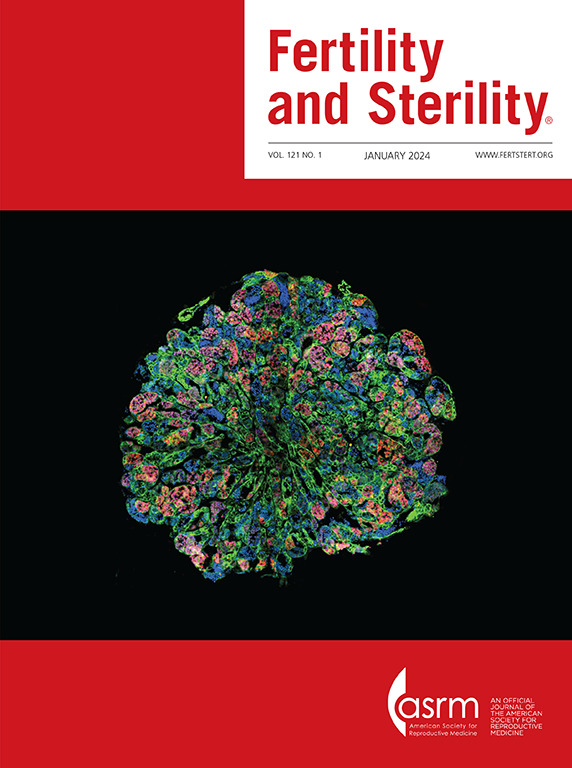Fertility preservation for cancer: referral guidelines, treatment options, and specific considerations
IF 7
1区 医学
Q1 OBSTETRICS & GYNECOLOGY
引用次数: 0
Abstract
As cancer incidence and survival rates increase among individuals of reproductive age, fertility preservation has become a critical component of comprehensive cancer care. Gonadotoxic treatments --such as chemotherapy, radiation, and surgery --can significantly impair reproductive potential, yet access to fertility preservation remains inconsistent. This review examines the clinical and logistical considerations involved in implementing fertility preservation for cancer patients, including patient selection, preservation methods, timing, and barriers to care. A systematic literature search was conducted using PubMed, ScienceDirect, and Embase from inception to February 2025, including original research, observational, and qualitative studies. Despite guidelines from ASCO and ASRM recommending early fertility preservation consultation, referral rates remain low due to provider, institutional, and financial barriers. The choice and feasibility of fertility preservation depend on factors such as cancer type, treatment urgency, patient age, and overall medical condition. Oocyte and embryo cryopreservation are standard options, while ovarian tissue cryopreservation is suitable for prepubertal patients or those requiring urgent treatment. Fertility preservation requires timely, multidisciplinary coordination, with individualized patient assessment and early referral essential for optimizing outcomes. Addressing systemic, educational, and financial obstacles is crucial to ensuring equitable access and maintaining future parenthood opportunities as a priority in oncologic care planning.
保留癌症的生育能力:转诊指南、治疗方案和特殊考虑
随着育龄个体癌症发病率和存活率的增加,保留生育能力已成为综合癌症护理的关键组成部分。促性腺毒素治疗——如化疗、放疗和手术——会严重损害生殖潜能,但保留生育能力的途径仍不一致。这篇综述探讨了对癌症患者实施生育能力保存的临床和后勤考虑因素,包括患者选择、保存方法、时间和护理障碍。系统检索PubMed、ScienceDirect和Embase自成立至2025年2月的文献,包括原创性研究、观察性研究和定性研究。尽管ASCO和ASRM的指南推荐早期生育保留咨询,但由于提供者、机构和经济障碍,转诊率仍然很低。保留生育能力的选择和可行性取决于癌症类型、治疗紧急程度、患者年龄和整体医疗状况等因素。卵母细胞和胚胎冷冻保存是标准选择,而卵巢组织冷冻保存适用于青春期前患者或需要紧急治疗的患者。保留生育能力需要及时的多学科协调,个性化的患者评估和早期转诊是优化结果的必要条件。解决系统、教育和财政障碍对于确保公平获取和保持未来生育机会至关重要,并将其作为肿瘤护理计划的优先事项。
本文章由计算机程序翻译,如有差异,请以英文原文为准。
求助全文
约1分钟内获得全文
求助全文
来源期刊

Fertility and sterility
医学-妇产科学
CiteScore
11.30
自引率
6.00%
发文量
1446
审稿时长
31 days
期刊介绍:
Fertility and Sterility® is an international journal for obstetricians, gynecologists, reproductive endocrinologists, urologists, basic scientists and others who treat and investigate problems of infertility and human reproductive disorders. The journal publishes juried original scientific articles in clinical and laboratory research relevant to reproductive endocrinology, urology, andrology, physiology, immunology, genetics, contraception, and menopause. Fertility and Sterility® encourages and supports meaningful basic and clinical research, and facilitates and promotes excellence in professional education, in the field of reproductive medicine.
 求助内容:
求助内容: 应助结果提醒方式:
应助结果提醒方式:


